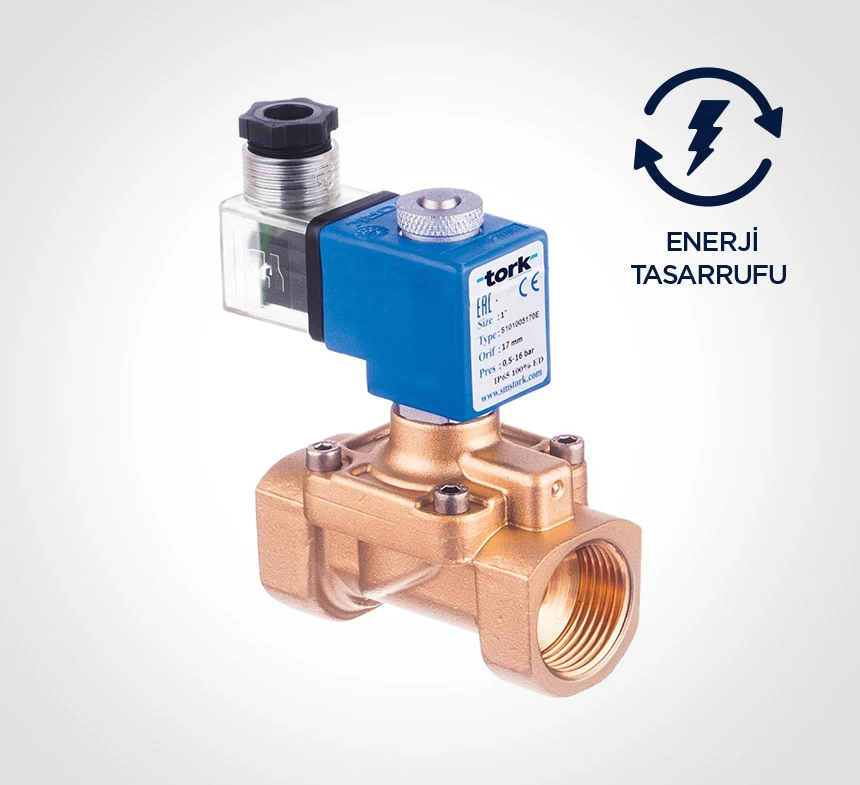Latching Solenoid Valve Design
Latching solenoid valves are energy-saving valves that consume energy during the first operation and do not need energy to maintain their position afterward. High energy savings are achieved by cutting the energy of the coil after it is energized only momentarily and after it is opened or closed.
Latching Solenoid Valve Working Principle
There is a magnet in the stub part of the latching solenoid valves. When the coil is energized for a short time, the core moves and the orifice opens. The moving core sticks to the magnet. This process is called Latching. To close the valve again, the positive and negative poles of the coil are changed and energized for a short time. In this case, the coil produces a magnetic field in the opposite direction and causes the magnet to disappear. In this case, with the force of the core spring, the core closes the orifice and the flow is interrupted. This process is called Delatching.
!It is necessary to give current in both directions for the latching valves to work. Switches T1 and T4 must be opened to open the solenoid, and switches T2 and T3 must be opened to close it.
In latching solenoid valves, it is important for energy saving that the energy is cut off after the core of the solenoid moves. Otherwise, the coil will consume energy continuously.
Latching Solenoid Valve Control Board
Latching solenoid valve control card is a special control card designed to use Latching solenoids more efficiently and to provide ease of use. It opens the valve when the card is energized, and closes the valve when the card is de-energized. The energy consumption is 50 mA, ie 1.2 W at 24 VDC voltage.
Thermostat Application for Latching Solenoid Valves
Control relays in thermostats generally give dry contact outputs. If the temperature level is above the desired value, the relay is activated. However, the problem here is that when the relay is pulled, the coil is constantly energized. In this case, the desired energy saving cannot be achieved.
Latching solenoid valve control card uses 12-24 VDC voltage coming from the relay contacts of the thermostat to open the solenoid. By cutting the energy of the coil 1-2 seconds after the solenoid is turned on, it not only saves energy but also prolongs the life of the coil. The point to be considered here is that for the solenoid to be open, the control card must be energized continuously. The control card does the work of cutting the energy going to the coil.
In order for the solenoid to close, it is sufficient to de-energize the control card. It provides the closing of the solenoid with the energy stored on the board.
As a result, it makes the control card open when energized and close when it is de-energized.


